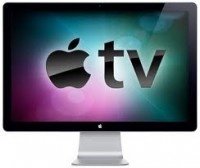If Apple does indeed release its own HDTV (the rumored “iTV”) could it sport a Retina display? That seems likely. The Retina display introduced with the Retina display MacBook Pro is the future of displays at Apple, especially as pricing goes down.
3D televisions haven’t been a bust, but haven’t sold in the big numbers expected. That should change when 3D TVs that don’t require glasses eventually arrive. However, many people believe that ultra-high 3840 × 2160 definition (UD), also known as 4K×2K, will be a meaningful value-added feature on TV sets, according to the NPD DisplaySearch (http://www.displaysearch.com) research group.
4K×2K has four times as many pixels as FHD (1920 × 1080), which is the current prevailing resolution for LCD TV panels. Smart phones and tablets — and, I’m betting, the Retina display MacBook Pro — have proven that end users enjoy higher resolution; in fact, the higher the better. People are accustomed to very high resolution in their mobile devices, and will start to expect the same in their TV.
Because LCD TVs are still mainly used for watching, consumers will perceive very high resolution as a direct benefit to watching, unlike other new features (such as smart, connected, or 3D TV, and LED backlight).
The best quality video is recognized as vivid with no difference between reality and screen, and the higher the resolution, the more vivid the content, says NPD DisplaySearch. When people grow accustomed to high resolution, it’s very hard for them to return to a lower resolution.
It makes sense to watch 3D programs on 4K×2K LCD TVs because the impact of the downgrade in resolution due to the 3D effect is not as severe. 3D technology halves resolution on LCD TVs. With 4K×2K, even after the 3D downgrade, the resolution is full HD, falling from 3840 × 2160 to 1920 × 1080.
For ultra-large LCD TVs, such as 60-80 inches, pixels are so big that they are visible in FHD. Therefore 4K×2K is recognized as necessary on very large TVs.
Even with these reasons, the market outlook for 4K×2K is still unclear due to TV broadcasting bandwidth limitations. Still, LCD TV panel makers have developed many 4K×2K panels. Most panel makers have been working on 55-inch plus panels for 4K×2K since panel makers target high-end and very large screen markets.
The biggest concern for 4K×2K remains the ecosystem. Currently the TV ecosystem relies on the bandwidth of broadcasting and transmission, notes NPD DisplaySearch. For content providers, it will be harder to achieve very high resolution as the cost of production, post-production, storage, and data transmission will be very high. Content is also an issue for 4K×2K TVs.
However, these products will be solved sooner than later, I suspect. Then we’ll see a Retina display iTV rolled out, I suspect. NPD DisplaySearch is forecasting that 4K×2K TV will account for 22% of all 50-inch plus FPD TVs in 2017. By then, Apple will likely be a serious competitor in this market.
— Dennis Sellers




